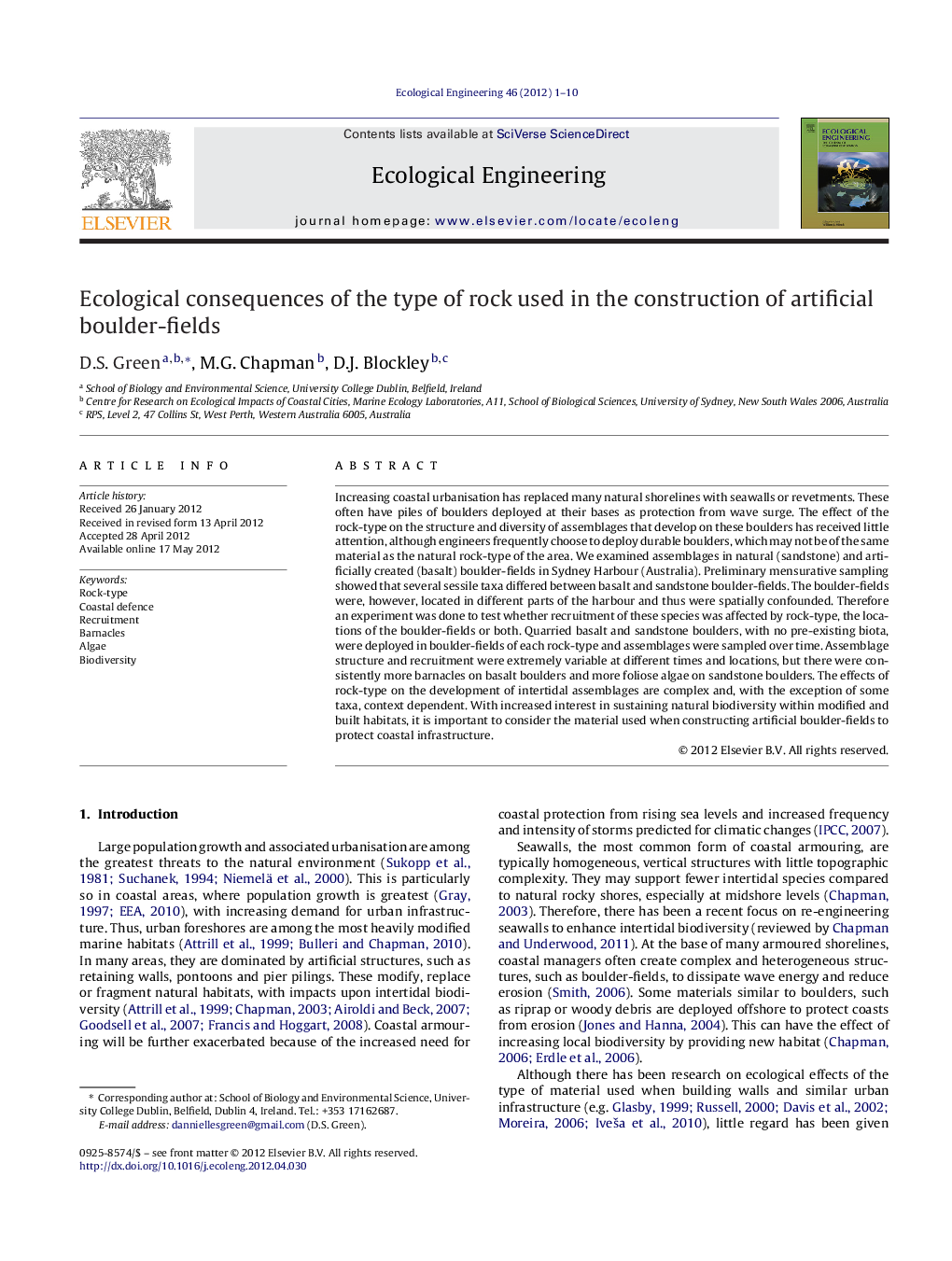| Article ID | Journal | Published Year | Pages | File Type |
|---|---|---|---|---|
| 4389974 | Ecological Engineering | 2012 | 10 Pages |
Increasing coastal urbanisation has replaced many natural shorelines with seawalls or revetments. These often have piles of boulders deployed at their bases as protection from wave surge. The effect of the rock-type on the structure and diversity of assemblages that develop on these boulders has received little attention, although engineers frequently choose to deploy durable boulders, which may not be of the same material as the natural rock-type of the area. We examined assemblages in natural (sandstone) and artificially created (basalt) boulder-fields in Sydney Harbour (Australia). Preliminary mensurative sampling showed that several sessile taxa differed between basalt and sandstone boulder-fields. The boulder-fields were, however, located in different parts of the harbour and thus were spatially confounded. Therefore an experiment was done to test whether recruitment of these species was affected by rock-type, the locations of the boulder-fields or both. Quarried basalt and sandstone boulders, with no pre-existing biota, were deployed in boulder-fields of each rock-type and assemblages were sampled over time. Assemblage structure and recruitment were extremely variable at different times and locations, but there were consistently more barnacles on basalt boulders and more foliose algae on sandstone boulders. The effects of rock-type on the development of intertidal assemblages are complex and, with the exception of some taxa, context dependent. With increased interest in sustaining natural biodiversity within modified and built habitats, it is important to consider the material used when constructing artificial boulder-fields to protect coastal infrastructure.
► Boulder-fields are built along seawalls using non-local rock-types. ► Impacts on biodiversity of using different rock-types in boulder-fields is unknown. ► We compared recruitment onto local (sandstone) and non-local (basalt) rock-types. ► There were more barnacles on basalt boulders and more algae on sandstone boulders. ► The rock-type used in construction of coastal infrastructure can alter biodiversity.
